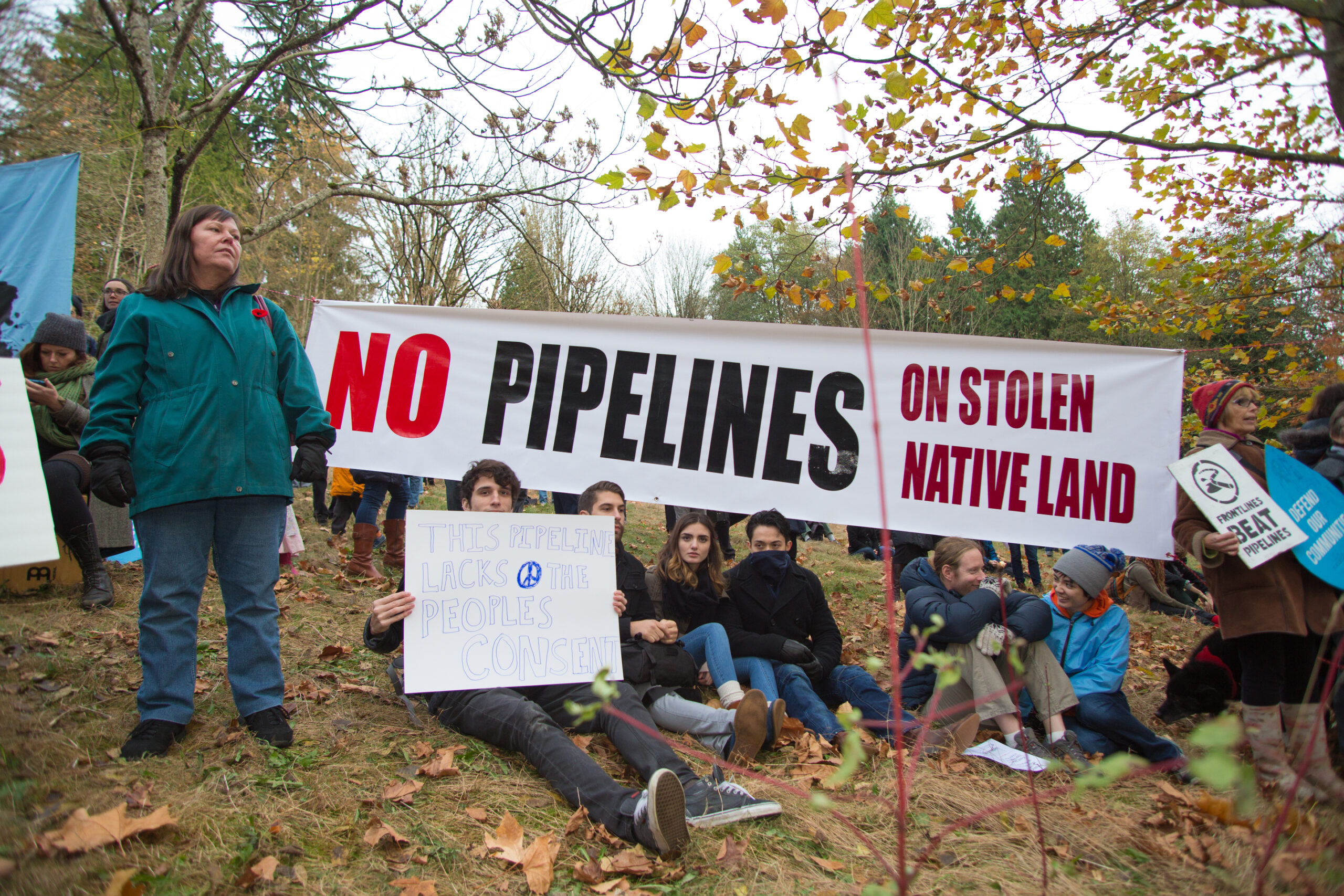On May 29th, the Canadian federal government in Ottawa announced plans to take over the struggling Trans-Mountain Pipeline Expansion (TMX) project.
The original Trans-Mountain Pipeline System (TMPL) was built in 1953 and remains the only major system in North American piping crude oil to the West Coast.
The TMX Project, first proposed by Texas-based Kinder-Morgan in 2013, was approved by the Government of Canada in 2016 despite a lack of support from the Provincial Government of British Columbia.
The TMX is a major step backward in efforts to fight climate change and maintain a healthy marine ecosystem. It would effectively triple the amount of oil leaving British Columbia for Puget Sound and the Pacific Ocean, from 300,000 to 890,000 barrels of oil per day, substantially increasing the risk of a catastrophic spill and adding more dirty fossil fuel to the world market.
To make matters worse, the TMX is slated to carry diluted bitumen, one of the dirtiest forms of oil. A spill in the Salish Sea would be extremely difficult to clean up and could cause irreparable damage to the region’s orca population, along with other aspects of our marine ecosystem.
As Washington State Governor Jay Inslee put it: “This project runs counter to everything our state is doing to fight climate change, protect our endangered southern resident killer whales and protect communities from the risks associated with increased fossil-fuel transportation — by rail and by sea.”
Inslee’s opposition has drawn the attention of the Canadian media.
The project has been delayed many times and there was hope, earlier this year, that it might have been permanently thwarted when Kinder-Morgan suspended the bulk of its efforts to move ahead with development back in April.
Unfortunately, six weeks later, the Government of Canada announced an agreement to bail out Kinder-Morgan by purchasing the TMPL and TMX with the intent to resell it by the end of the summer so that work can resume. Details of that plan include a veritable guaranteed that construction will restart in 2018.
This story broke fewer than six weeks ago and, already, it has disappeared from the news cycle. This is understandable, given the constant flood of breaking news in recent months. But we cannot afford to neglect the defense of our environment or abandon our commitments to a cleaner energy future.
If you want to learn more about the TMX and the environmental risks of pumping and shipping more crude oil through Northwest wilderness and communities, the Tsleil-Waututh Nation has put together a brilliant, comprehensive assessment. You can read an overview and download a copy of their assessment from their website.


The toxic, tar sands have to be refined/upgraded into synthetic crude oil on the tar sands regions, before transporting, to prevent another Kalamazoo River disaster from happening anywhere. The tar sands contain benzene, toluene, ethyl benzene and hydrogen sulphide.